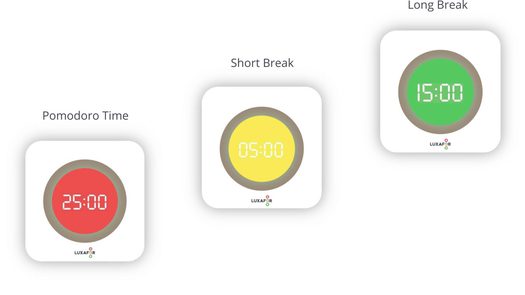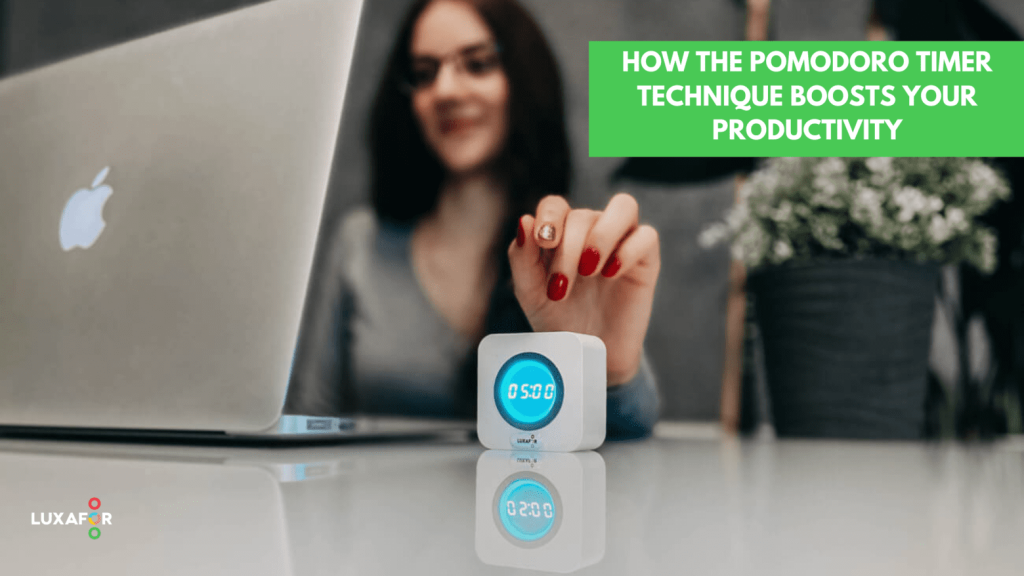How the Pomodoro Timer technique boosts your productivity
Plenty of tasks allocated, one person who needs to be multifunctional to do all of that, while working 8 hours a day. How to do everything that is needed from you and not get insane, not start procrastinating, be productive and remember everything asked of you? If you are not sure how to answer this question we can add another one, to clarify.
Have you ever heard about such a technique as Pomodoro?
It’s a time-management technique that asks from you just a smartphone, a notepad, a pen/pencil/marker, or maybe other special product in order to fulfill your needs. Let’s get into more details, while you are still here with us:
Introduction / History
Francesco Cirillo – the owner of Cirillo Consulting is the one who stands as a certified guide to this technique. It goes back to the 1980s, while he was still a student and he had willing to spend the minimum amount of time on studies.
He decided to experiment – precisely, divide his homework into the same short time spans. In order to control himself, he decided to take a timer that looked like a tomato (“pomodori” from Italian means tomato, and here we come to the origins of this technique name – Pomodoro), and he was putting a timer on for 10 minutes.
That’s how he figured out that it’s way easier for him to concentrate on the task, as he had in mind that, after finishing his allocated task he’ll have 10 minutes to rest and after that again start doing things. So, that’s how it all started.
As he was continuing with the experiment, he created the complete system to be even more effective. The additions were:
- Work time has increased to 25 minutes
- Rest time has become 5-10 minutes
- After 4 such Pomodoros, take greater rest for – 15-20 minutes
- Repeat those steps – until you have done everything that was needed for the day.
Maybe this visual representation will clear things up better for you, here is the example:

Source: Luxafor Pomodoro Timer
Some other questions that may arise:
- What are the key elements of this technique?
- Do I need to prioritize tasks?
- Shall I postpone some tasks till later if it’s almost impossible to finish them today?
Answering the first question – What are the key elements of this technique?
- Make yourself a list of tasks or a plan you need to do in the upcoming days, this week – such tasks are called “active”.
- From the tasks list focus on the ones that you, surely, need to do today, and put them in the list.
- And here comes the answer to 2nd question “Do I need to prioritize tasks?” – Yes, you do. Prioritize those tasks from the most to least crucial.
- Then go on with Pomodoro repetition from above – set the timer to 25 minutes and start working.
- After 25 minutes – rest for 5 to 10 minutes. After 4 such Pomodoros – more continuous rest for 15 to 20 minutes.
- Repeat points 4-6 until you have closed all the tasks needed. Every finished task sign with a cross or strikethrough. Simultaneously, here comes the answer to the 3rd question about postponing – if you have energy still, willing – finish everything else today, if not – postpone. Just don’t get into the negative snowball effect.
Seems fine? Then we shall continue.
What is the GOOD about this technique?
- You are focused. You are working on the exact task. The risk to get distracted and get into multitasking becomes lower as after 25 minutes you have a break.
- You start doing more in a less period of time. Productivity increases. As you are not absent-minded on other tasks or social media and don’t divert your brain with useless information.
- You may analyze the effectiveness of task completion. Especially, when you see how much time was spent on the task. For instance, one task was too big and took you one day to complete. The other was done in 2 Pomodoros and etc.
- You see a direct connection between goals and tasks. The goal is achieved by small steps (tasks), and you understand where you got to by checking crossed, completed tasks.
- You can change this technique by looking at your needs. Adaptability. You may increase either working time or rest in Pomodoro, or have more time on a BIG rest, while being in the office, for example.
You learn to effectively plan your daily tasks. Prioritizing and understanding how much time the task may take.
Some suggestions from our side
So, as smartphones are mostly distracting us when we take it in our hands setting a Pomodoro App, we’ve come up with a different solution to that. We’ve decided to get Luxafor Pomodoro Timer, and it turned out really handy in terms of using the technique we’ve told you about.
We don’t need to use our phones to set the timer anymore. With Luxafor Pomodoro Timer we don’t even need to have a phone with us during the working process. That’s a bit of our insight. Here’s what it looks like.

What to do if, while the working process with the Pomodoro timer, someone distracts you?
- Tell the one who’s distracting that you are completing the task and arrange time later to discuss what is needed. I for instance am pointing at my Luxafor Pomodoro Timer that shows Red (working time) and timer allocated, and my colleague has no questions afterward. But, sure, during your rest, you may discuss what is needed with colleagues.
- Write down your meeting or put a reminder on your smartphone or on a piece of paper.
- Meet or call the person after finishing your Pomodoro to discuss.

Last but not least – how to evaluate your efficiency while working with the Pomodoro technique?
To do so, divide your ”Pomodoro” working process into smaller parts — so at the beginning and at the end of working time you have 3-5 minutes:
- In the beginning to understand what you were doing before you started
- In the end – to understand what exactly you were doing in the work process.
If you write down something extra to the tasks (for example, any additional info, evaluation, insights), you can analyze that also, so you can see – what was hard for you, tiring and where you were inattentive.
Hopefully, it was helpful for you. Best of luck, and have a nice day!
LUXAFOR HELPS PEOPLE TO ACHIEVE THEIR GREATEST PRODUCTIVITY LEVELS WITH A WIDE VARIETY OF OFFICE PRODUCTS. LET’S BE PRODUCTIVE TOGETHER!















